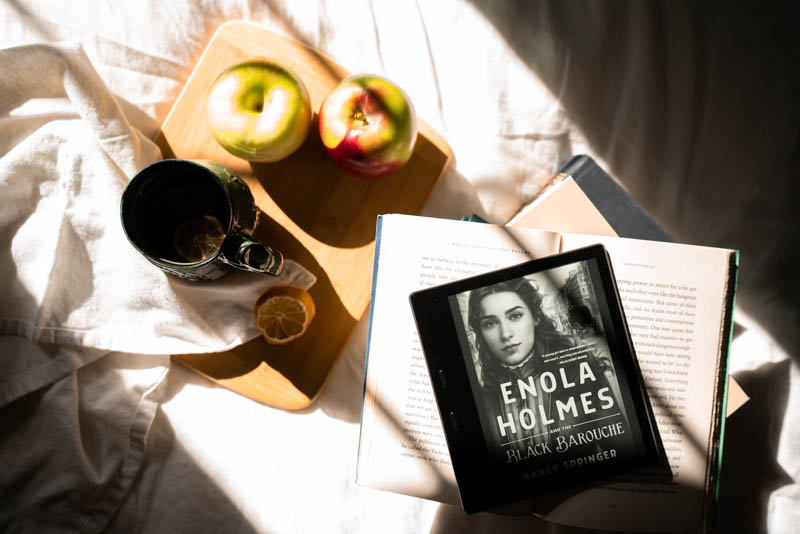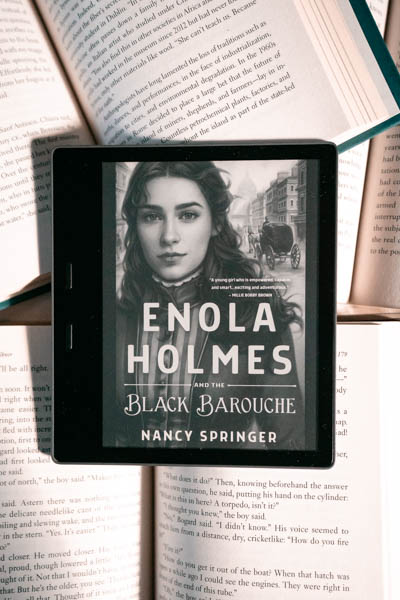Enola Holmes & The Black Bourrache

Enola Holmes returns for another mystery, though this time things are a little bit different. Miss Enola is a year older, living on her own in a renowned ladies club, and she has an appetite for fashion and finding lost things.
The 7th book in the Enola Holmes series did not change in tone too much. I expected that the gap between the published books and the acclaim of the Netflix film would change the tone of the book to fit a more mature reader. But I’m glad Springer kept the familiar, cheerful banter and lighthearted tone juxtaposed with the more intense context of the chapters, like kidnapping, abuse, and attempted murder.
Springer’s characterization of Enola is consistent with the other books as well. She is still Alone Enola, but she is braver, clever-er, and less alone this go round. Her brothers do not seek to tame her, but instead help her grow and treat her as their equal. Sherlock plays a significant role in the Black Bourrache, and he behaves more like Enola’s partner in solving crimes then parent or guardian. Enola has found her community, one that she can thrive and grow in. She still is kind and values life and connection. She’s eager to help others, which is the main motivator in solving her mysteries--not a selfish or arrogant need to prove herself.

It is important that Enola is the heroine of this story. The Black Bourrache reveals oppression of women in Victorian London, silencing females by declaring their voices unreliable, sending them to asylums for treatment that often they never returned from. Springer illustrates glimpses of the horrific plight of these asylums and the women caged within them, but only glimpses as to keep the overall tone of the book light.
A familiar character returns to the 7th book, Tewky, who also happens to star in the Netflix film. Tewky’s film character and book character are not entirely the same. Tewky in the books is portrayed more as a brotherly figure than a love interest for Enola. And I’m not gonna lie, I really really wanted some kind of romantic tease between the two in this particular book. Honestly, his role in this book seemed a bit out of place for me. Well, it’s almost as if Springer was using the Netflix film as a way to increase book sales. Oh, I don’t know. It was good to see Tewky in this book series again, as silly as it was.
The underlying plot of the first 6 books in the Enola series searches for Enola’s missing mother. Black Bourrache is set after Enola has found her mother (I don’t want to reveal too much in case you haven’t finished them yet). Soooo, I mention this because this book can be read as a stand alone. It separates itself from the rest of the series in two forms:
- The mother mystery has already been solved.
- Enola’s brothers are no longer hunting her.
It was a fun read. I picked it up on a sunday afternoon and finished that evening. The tone, as I mentioned, helps quicken the pace as does certain cliffhangers from chapter to chapter.
Thank you so much for reading. I wrote a review of the first Enola book; you can read that here.
If you’re interested in reading more middle grade stories, I’d like to invite you to the Stars for Buttons book club. We read only middle grade genre and have so much fun doing it. You can find the sign up page and FAQ here.
Thank you!